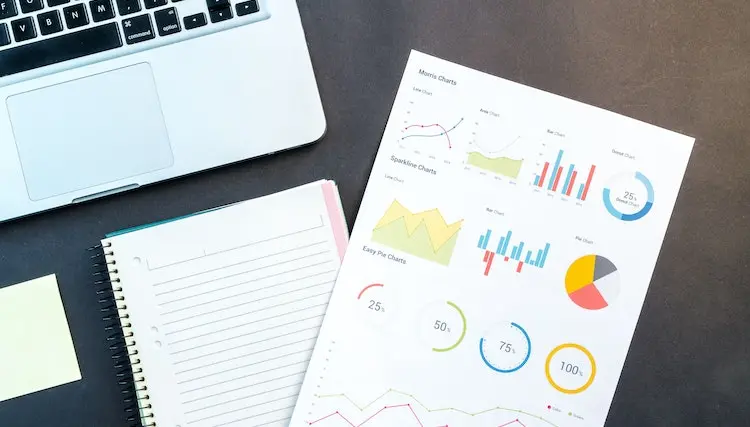The Ultimate Guide to Sales Forecasting: What is Sales Forecasting and How Do You Forecast Sales?
Sales forecasting is a critical aspect of strategic planning for businesses of all sizes. It involves predicting future sales based on historical data, market trends, and various factors that impact revenue generation.

Accurate sales forecasting empowers companies to make informed decisions, allocate resources efficiently, and set achievable sales targets. In this comprehensive guide, we will delve into the world of sales forecasting, exploring its definition, importance, and the methods used to forecast sales.
Understanding Sales Forecasting
What Is Sales Forecasting?
Sales forecasting is the process of estimating future sales volumes and revenues for a specific period, typically a month, quarter, or year. It is a crucial component of business planning that helps organizations allocate resources, set sales targets, and make informed strategic decisions.
The Importance of Sales Forecasting
- Resource Allocation: Sales forecasts guide resource allocation, enabling companies to assign budgets, personnel, and production capacity effectively.
- Goal Setting: Accurate forecasts serve as a basis for setting realistic sales targets and performance goals for sales teams.
- Inventory Management: Forecasting helps businesses manage inventory levels, ensuring that products are available to meet customer demand without overstocking.
- Financial Planning: Reliable sales forecasts are essential for financial planning, budgeting, and securing financing or investment.
- Market Insight: By analyzing historical data and market trends, organizations gain valuable insights into consumer behavior and preferences.
Methods of Sales Forecasting
Several methods are employed to forecast sales, each with its own strengths and limitations. Here are some commonly used approaches:
1. Historical Sales Data
This method relies on past sales data to predict future performance. Analysts examine historical sales patterns, accounting for seasonality and trends. While simple, this method may not account for external factors that can impact sales.
2. Market Research
Market research involves collecting data on market trends, customer preferences, and competitor behavior. Surveys, focus groups, and industry reports provide valuable insights for forecasting.
3. Time Series Analysis
Time series analysis uses mathematical models to analyze historical data and project future sales. It considers factors like seasonality, trend, and cyclicality, making it useful for forecasting when historical data is available.
4. Qualitative Methods
Qualitative methods involve expert opinions, sales team input, and subjective judgment. Delphi method, expert panels, and market research can help when historical data is scarce or unreliable.
5. Regression Analysis
Regression analysis examines the relationship between sales and one or more independent variables, such as advertising spend, price changes, or economic indicators. It helps identify key drivers of sales.
6. Predictive Analytics and Machine Learning
Advanced analytics and machine learning algorithms analyze vast datasets, identifying patterns and predicting sales based on a multitude of variables. This approach is increasingly popular due to its accuracy.
Steps in Sales Forecasting
Step 1: Data Collection
Gather historical sales data, market research, and any other relevant information needed for the chosen forecasting method.
Step 2: Data Analysis
Analyze the collected data to identify trends, patterns, and potential influencing factors.
Step 3: Select a Forecasting Method
Choose the most appropriate forecasting method based on data availability, accuracy requirements, and the complexity of the business environment.
Step 4: Model Building
If using quantitative methods like time series analysis or regression, build the forecasting model and validate its accuracy using historical data.
Step 5: Forecasting
Generate sales forecasts for the desired future period, considering seasonality, trends, and any identified influencing factors.
Step 6: Review and Adjust
Continuously monitor actual sales performance against forecasts and make adjustments as necessary.
Challenges in Sales Forecasting
Sales forecasting is a complex endeavor that comes with its share of challenges:
1. Data Quality
Inaccurate or incomplete data can lead to unreliable forecasts. Ensuring data accuracy is paramount.
2. Market Volatility
Economic changes, shifts in consumer behavior, and unexpected events like pandemics can disrupt sales forecasts.
3. Complex Products
If a company offers a wide range of products or services, forecasting can become more complex due to varying demand patterns.
4. Seasonality
Businesses subject to seasonality must account for variations in sales throughout the year.
5. Competition
Competitor actions can impact sales, making it challenging to predict market dynamics accurately.
The Role of Sales Coaching in Sales Forecasting
Sales coaching plays a significant role in the accuracy of sales forecasts. Effective coaching helps sales teams better understand customer needs, improve sales processes, and enhance their ability to close deals. Sales coaches can provide valuable insights that contribute to more accurate sales forecasts by sharing their knowledge of market trends, customer behaviors, and the competitive landscape.
Sales forecasting is a vital tool for businesses looking to plan, allocate resources, and set realistic sales targets. It involves various methods, data analysis, and continuous monitoring. While challenges abound, accurate sales forecasts are attainable with the right data, methodology, and expertise. Leveraging sales coaching can further enhance the precision of sales forecasts, aligning sales teams with strategic objectives and improving overall sales performance. In a dynamic business environment, mastering the art of sales forecasting is essential for sustainable growth and success.

